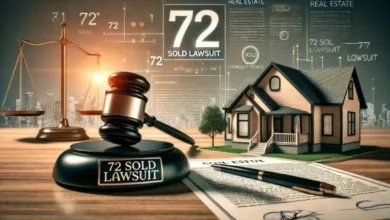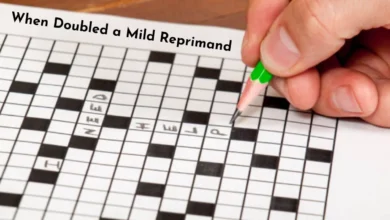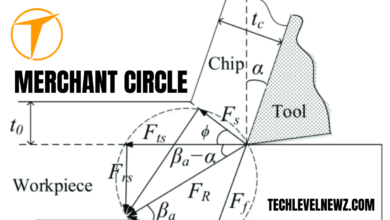Bubble Font: The Ultimate Guide to Playful and Creative Typography

Introduction
Bubble fonts, known for their rounded, inflated appearance, have carved a niche in the design world due to their fun, playful, and eye-catching nature. From graffiti roots to popular design choices in marketing, logos, and print, bubble fonts have evolved into a versatile typography option. These fonts stand out with their bold, curved lines and soft, non-threatening aesthetic, making them perfect for conveying messages of friendliness, creativity, and approachability.
Bubble fonts are commonly seen in digital design, especially on social media platforms where brands aim to capture attention quickly. They also have a place in print, with posters, invitations, and children’s materials frequently using this typeface to create a sense of fun. In this guide, we’ll dive deep into what makes bubble fonts unique, explore their best uses, review popular fonts, and provide tips on how to customize and integrate them into your projects.
What is a Bubble Font?
Characteristics of Bubble Fonts
Bubble fonts are immediately recognizable by their smooth, rounded shapes, which often resemble inflated balloons. Unlike other font styles such as serif or sans-serif, bubble fonts prioritize aesthetic appeal and creativity over formality. They are typically bold, with thick, soft lines, creating an almost 3D effect. This visual style gives off a playful, carefree vibe, which makes it perfect for casual, fun, and youthful designs.
These fonts are highly versatile, offering various styles ranging from simple, clean lines to more detailed 3D and gradient-filled designs. Some bubble fonts feature outlines that give an extra pop, while others may incorporate shading or patterns, making them even more dynamic. Whether in retro themes or modern digital spaces, bubble fonts consistently bring a sense of energy and positivity to a design.
History and Evolution of Bubble Fonts
Bubble fonts have their origins in street art and graffiti, where artists began using exaggerated, rounded letters to create bold, attention-grabbing tags. Over time, this style caught the attention of commercial designers, who saw its potential for advertising and branding. During the 1970s and 1980s, bubble fonts became popular in retro-themed designs, often used for album covers, posters, and children’s merchandise.
As digital design evolved, bubble fonts found a new home in digital and social media marketing. Designers began incorporating them into website headers, YouTube thumbnails, and Instagram posts to attract younger audiences. Today, bubble fonts remain a popular choice for anyone looking to create a lighthearted, energetic atmosphere in their designs.
Why Bubble Fonts Are So Popular
The appeal of bubble fonts lies in their ability to evoke a sense of playfulness and friendliness. Unlike more formal or rigid fonts, bubble fonts invite the viewer in, creating an emotional connection through their soft, approachable forms. This makes them a favorite for brands and businesses targeting younger or casual audiences, as they convey messages of warmth, creativity, and accessibility.
Bubble fonts are also highly adaptable. They work well in both digital and print formats and can be easily customized with colors, patterns, or textures to suit the needs of different projects. This versatility, combined with their visually striking appearance, ensures that bubble fonts remain a go-to choice for many designers.
Best Uses of Bubble Fonts in Design
Bubble Fonts for Logos and Branding
One of the most common uses of bubble fonts is in logo design and branding. For companies looking to convey a sense of fun or creativity, bubble fonts are an excellent choice. They allow brands to stand out from competitors, especially in industries like entertainment, fashion, and children’s products. For example, bubble fonts are often used in logos for toy companies, candy brands, and casual apparel lines, where the goal is to create an inviting, playful identity.
However, it’s important to strike the right balance when using bubble fonts in branding. While they can add a unique flair, overuse can lead to a lack of professionalism. Pairing bubble fonts with simpler, more traditional typefaces can create a balanced look, ensuring that the brand still communicates reliability and trustworthiness.
Bubble Fonts in Social Media and Digital Design
Social media platforms thrive on quick, impactful visuals, and bubble fonts are a perfect fit. Their bold, rounded letters easily catch the viewer’s eye, making them ideal for use in banners, ads, and posts. Bubble fonts are especially popular on Instagram and YouTube, where creators use them for thumbnails, story highlights, and promotional content aimed at younger audiences.
When designing for digital platforms, bubble fonts can be combined with vibrant colors, gradients, or drop shadows to create visually striking elements. They are also often paired with playful imagery or icons to enhance the overall design. The key to success is keeping the design clean and readable while ensuring that the bubble font remains the focal point.
Bubble Fonts for Print Media (Posters, Flyers, Invitations)
Bubble fonts are equally popular in print media, where their bold and playful appearance can make invitations, posters, and flyers stand out. Whether designing a birthday party invitation, a playful event poster, or a promotional flyer for a fun-filled festival, bubble fonts can help convey a sense of excitement and joy. Their round shapes make them visually appealing and easy to read, even from a distance.
In print, bubble fonts often shine in larger formats, where their boldness and curvature can be fully appreciated. They are frequently used in children’s materials, such as books, educational posters, or product packaging, to engage young readers or consumers. The bright, friendly style of bubble fonts makes them perfect for creating an inviting and cheerful atmosphere in print designs.
Top Free and Premium Bubble Fonts
Best Free Bubble Fonts to Download
There are a variety of free bubble fonts available for designers, offering high-quality designs that can be used in both personal and commercial projects. Some popular free bubble fonts include:
- Bubblegum Sans: A clean, modern bubble font that works well for web and print.
- Chewy: A bolder, more playful option for fun projects.
- Baloo: An Indian-style bubble font with regional variations.
When using free fonts, it’s important to check licensing terms to ensure they are permissible for commercial use, especially when creating branding or marketing materials.
Best Premium Bubble Fonts for Professional Use
For professional designers seeking more unique or customizable bubble fonts, premium options are a great investment. Premium fonts often come with extra features such as alternate glyphs, customizable weights, or integrated 3D effects. Popular premium bubble fonts include:
- Bubbly Plus: A polished, premium font that offers advanced customization for branding.
- Plump Party: A highly stylized bubble font with fun design options for invitations and posters.
- Fat Frankie: A bold and versatile bubble font designed for both web and print.
Investing in premium bubble fonts provides access to higher-quality designs that can be tailored to fit specific project needs, ensuring a professional finish.
How to Use and Customize Bubble Fonts in Design Projects
Designing with Bubble Fonts in Adobe Illustrator, Photoshop, and Canva
When using bubble fonts in design software, it’s essential to understand how to scale and adjust them to maintain their clarity and boldness. In programs like Adobe Illustrator or Photoshop, bubble fonts can be enhanced with shading, outlines, and other visual effects to give them added depth. Canva, a popular online tool, offers a range of bubble font options that are easy to customize for social media graphics or presentations.
Creative Customization of Bubble Fonts
To make your bubble fonts stand out, consider adding custom effects like gradients, textures, or shadows. This can give the letters a 3D appearance or make them more dynamic when used in posters, websites, or promotional materials. Additionally, experimenting with color schemes can enhance the visual appeal, especially when using bubble fonts for logos or event invitations.
Best Practices for Readability and Accessibility
While bubble fonts are fun and visually appealing, readability should always be a priority. Use sufficient spacing and contrast to ensure that the text remains legible. When using bubble fonts for headings or titles, avoid overcrowding the design, and pair them with simple, clear fonts for the body text to maintain balance and accessibility.
Conclusion
Bubble fonts are an exciting and versatile tool for designers, offering endless possibilities for creative expression. From branding and social media to print media, bubble fonts have the power to transform ordinary designs into playful, engaging visuals. By carefully selecting and customizing bubble fonts, you can create designs that resonate with your target audience while maintaining readability and professionalism.



